- Search Please fill out this field.
- Manage Your Subscription
- Give a Gift Subscription
- Newsletters
- Sweepstakes
We independently evaluate all of our recommendations. If you click on links we provide, we may receive compensation.
- Travel Products
- Tech Essentials

The 12 Best Travel Cameras of 2024
Whether you’re shooting landscapes or cityscapes, these are the best travel cameras for capturing your memories.
:max_bytes(150000):strip_icc():format(webp)/Lauren-Breedlove-2000-8fc62921334e4fe5a26bc333e9ea4b1b.jpg)
In This Article
- Our Top Picks
- Tips For Buying
Frequently Asked Questions
- Why Trust T+L
Travel + Leisure / Brian Kopinski
Cameras let us snap scenes that inspire, places that take our breath away, and simple moments that make up the fabric of a destination through a single shot. Hefty camera bodies with giant lenses might seem like the obvious choice for top-notch photos, but for travel, they can be a bulky hindrance taking up too much packing space. Instead, consider your specific needs as a jumping off point when you're ready to shop for a new camera. Are you a hardcore adventurer? Are most of your travels long-haul trips? Are you a beginner or advanced photographer? These are all questions you should ask yourself to help narrow it down.
Whether you purchase a budget-friendly camera or something pricier, it'll be an investment — not only financially, but also in trusting your pick to properly capture once-in-a-lifetime experiences that don't come with do-overs. To help with your travel camera search, we also spoke to professional photographers Jonathan Pozniak and Viktoria North, as well as Nikon senior product manager Mark Cruz, to get some expert advice on how to choose the best camera for you.
Best Overall
Sony alpha a7cr.
It’s compact in size but a powerhorse.
There’s only one SD card slot.
A full frame mirrorless camera with incredibly high resolution, the Sony Alpha 7CR is our top pick for a travel camera. The compact size makes it very portable, and the interchangeable lenses give you a lot of versatility for shooting everything from landscape or wildlife to portraits and city scenes. As a photographer, I love the intuitive design of the Sony Alpha series cameras and this one is no exception; auto-focus tracking is impressive, in-body image stabilization does not disappoint, and the battery life has improved significantly from earlier models. Track your subject with the smart eye detection, for humans and wildlife, including a special bird option. I also appreciate how customizable the settings and buttons are, making your photography shoots more efficient. In addition to having the capability of capturing high-quality photographs in both RAW and JPG files, this camera takes video in 4K too. Built-in WiFi and bluetooth capabilities make it easy to share photos or connect to a remote as well. For a professional quality camera that won’t take up too much space or weigh you down when traveling, this is our top choice.
The Details: Full frame CMOS (35.7mm x 23.8mm) sensor | 61 megapixels | 1/8000 to 30 seconds shutter speed | 4K video | 1.1 pounds
Best Action Camera
Gopro hero12 black.
It’s waterproof and weatherproof.
It doesn’t include a GPS component.
The rough and tumble GoPro Hero12 Black has long been one of the top action cameras, with its pocket-sized and durable design. With improved image stabilization and battery life, as well as the ability to handle hotter temperatures, this newest version is no exception. With so many accessories that can be purchased separately, this camera can be equipped for any adventure, big or small, cold or hot, wet or dry. I especially love the bite mount for capturing POV, hands-free shots, with my dog. This camera is so compact and portable, it’s perfect for travel. Anything you find yourself doing, from mountain biking or skiing, to snorkeling, or taking a sunrise timelapse, will be captured so vibrantly. Customize the frame rate and settings when capturing video, with the option for 5.3K video quality. You have the option to shoot in RAW or JPEG, though you can only use the wide angle when shooting RAW. Other cool features include the ability to use voice commands to take a photo or start video, and modes like HDR, sup slow motion movie, and star trails.
The Details: Size-unspecified CMOS sensor | 27 megapixels | 1/8 to 30 seconds in photo mode, 1/480 to 1/30 seconds in video mode shutter speeds | 5.3K + 4K video | 5.4 ounces
Best Budget DSLR
Canon eos rebel t7.
It's super affordable and user-friendly.
It's best suited for entry-level photographers.
With the Canon EOS Rebel T7, you can save your dollars without skimping on image quality, and there's not much more you can ask for in the DSLR world. Although there is a newer version of this camera ( EOS Rebel T8i ), the T7 is still the most budget-friendly device with features perfect for someone ready to branch out and learn the ins and outs of DSLRs. That being said, it's more suited for a beginner photographer who wants to amp up their game past smartphone photography . It's a fantastic camera to practice manual mode and learn how to adjust ISO, aperture, and shutter speed settings. Eventually, it's likely that you'll be ready to graduate to a more complex camera — but we all have to start somewhere, right?
Canon is well known for having a straightforward, easy-to-use system, which is a huge bonus for beginners. The LCD screen is helpful for navigating the menu and setting up images, though it does lack the luxury of touchscreen capabilities. Built-in WiFi allows for quick sharing between devices, so your amazing shots can be posted to social media platforms in a jiffy.
The Details: Cropped CMOS sensor | 24 megapixels | 1/4000 to 30 seconds bulb shutter | Full HD video | 15.06 ounces (body only)
Best Budget Mirrorless
Canon eos r50.
It’s compact and lightweight, offering great value for its features.
Advanced photographers might prefer a camera with more bells and whistles.
The brand new Canon EOS R50 snags the spot for best budget mirrorless and doesn’t only promise great photo quality, but its video capabilities are fantastic as well. With 4K uncropped video and stellar subject detection and tracking at a friendly price point, this mirrorless model is a great everyday camera that’s ideal for everything from social media video captures to portrait and landscape shooting. Interchangeable lenses give you flexibility, and the compact design won’t weigh you down. Excellent auto-focus that can be tailored to detect humans, animals, and even vehicles is a major highlight, as is the 12fps (frames per second) burst mode. The touchscreen and creative assist mode make this a beginner-friendly camera as well as one that won’t break the bank.
The Details: Cropped CMOS (APS-C) sensor | 24.2 megapixels | 1/4000th sec - 30 seconds, in 1/3-step increments shutter speed | 4K video | 11.52 ounces
Best Retro Look
Fujifilm x100vi camera.
It has a timeless look with modern features.
Since it’s a limited edition model, there are only a certain number available for purchase.
We love how compact and sleek the limited edition FUJIFILM X100VI is, with the nod to nostalgia symbolized by the engraved original brand logo. This is our top pick for best retro-inspired camera, but if you can’t get your hands on one of these limited edition models, the FUJIFILM X-T5 is our next best bet. That being said, this model has fantastic low-light capabilities, in-body stabilization, 6.2K video capture, and improved in-body stabilization to minimize shaky shots. It has a tilting LCD touchscreen display, which I find makes it easier to snag those artistic selfies in the midst of epic landscapes or to get a solid group photo. The lens is a fixed 35mm lens. With the camera’s WiFi, it also uses an intuitive camera-to-cloud (c-2-c) system which automatically uploads content to the cloud-based platform. For a small camera with a "throwback" look that has amazing capabilities, this one is perfect for travelers as an everyday use tool.
The Details: APS-C X-trans CMOS 5 HR sensor | 40.2 megapixels | 1/4000 to 15 Minutes in manual mode shutter speed (mechanical), 1/180000 to 15 minutes in manual mode shutter speed (electronic) | 4K + 6K video | 1.1 pounds
Best Mirrorless for Beginners
The user-friendly design makes learning photography with this model much easier.
The flip screen tends to get in the way of a tripod attachment if you're using one.
We love how the Nikon Z50 is small enough to fit in your pocket, but don't be fooled by its size: it produces big-time quality images. "For those new to photography and video, this camera provides an exciting entry point. It's small enough to carry with you, but offers higher-quality images than your phone. This model is great to learn with as it incorporates many easy-to-use features, plus offers an automatic mode that senses different shooting scenarios and automatically adjusts the camera's settings (e.g., ISO range, exposure compensation) to deliver stunning results," Nikon's Cruz says.
The flip-down LCD screen is ideal for travel photographers and creators that want to take selfies, vlog, or include themselves for scale. The Z50 is also designed to save settings for both photo and video separately, so you don't have to worry about changing everything when you switch modes. With low-light capabilities, an easy-to-navigate menu, a sleek design, and 11 frames per second at full resolution, a beginner travel photographer will be hard pressed to find a better mirrorless camera.
The Details: Cropped APS-C CMOS sensor | 20.9 megapixels | 1/4000 to 30 seconds, bulb, time shutter | 4K video | 14 ounces
Best DSLR for Beginners
Pentax pentax kf dslr.
It produces high-quality images at a more affordable price than most competitors.
The video capabilities aren’t that impressive.
For those interested in getting their feet wet with photography, the Pentax KF DSLR Camera is our top choice for its durable, weather-resistant body, vari-angle screen, and compact size despite DSLR cameras’ reputation for being hefty in general. It offers a solid grip, and longer battery life, as most DSLR’s do. Start learning the camera in automatic and make use of the manual controls as you learn photography. The large viewfinder is fantastic, and this particular model mixes modern mirrorless technology with the classic DSLR viewfinder by offering a live view in addition to the optical viewfinder. You’ll be able to mix and match your preferred focal lengths with this model as well, since it’s equipped for interchangeable lenses. For the price point, this newbie from Pentax is a solid entry level DSLR for travel that won’t take up a ton of space in your bag.
The Details: Cropped APS-C CMOS sensor | 24.2 megapixels | 1/6000 to 30 seconds shutter in auto mode, 1/6000 to 30 seconds shutter in manual mode | 1080p HD video | 2.73 pounds
Best Mirrorless for Outdoor Photography
Om system om system mark ii.
The autofocus is fast.
The video capabilities aren’t as fast as other models.
The newest OM SYSTEM camera, the OM-1 Mark II Mirrorless model is a lightweight and compact, high-performing camera with durable construction and IP53 weatherproofing. This means it can withstand the elements when shooting landscapes or wildlife outdoors, including some rain, wind, and snowflakes. In fact, the camera is freezeproof, dust and splash-resistant, and can handle temperatures as low as 14 degrees Fahrenheit. The built-in stabilization is another key factor for outdoor and wildlife photographers, helping you to get the sharp image and assisting with longer exposures to minimize shake. The rubber control dials give you a little more grippy control when shooting, which is a nice additional feature that can go a long way. For a workhorse mirrorless travel camera that can hack it outdoors, this is a fantastic choice.
The Details: Cropped 17.4 x 13 mm (four-thirds) BSI MOS sensor | 20.4 megapixels | 1/8000 to 60 seconds shutter (mechanical), 1/32000 to 60 seconds shutter (electronic) | 4K video | 1.1 pounds
Best Splurge
Leica q3 digital camera.
It’s fast and performs well in most lighting conditions.
The front of the camera has a flat design, making it tricky to grip at times.
This pick is an upgrade to the Leica Q2 version of the company’s classic rangefinder camera, and we love how easy to use and versatile the Leica Q3 is across a wide array of shooting conditions. This fresh model allows for in-camera charging, which is a worthy upgrade from the previous one. The same full-frame capabilities are now paired with a powerhouse 60MP high-resolution sensor, hybrid AF (autofocus) system, and 8K video recording ability. The processing is speedy for both shooting stills and video, and boasts continuous shooting up to 15 frames per second. The fixed 28mm f/1.7 prime lens is impressive even in low light conditions, and a full battery charge will score you approximately 350 shots. The Leica Q3 is a great choice for intermediate to advanced photographers seeking high-end equipment for everyday purposes and professional jobs.
The Details: Full-frame BSI CMOS Sensor | 60 megapixels | 1/2000 to 1/2 second shutter speed, 1/2000 to 4 seconds in auto mode | 8K video at 30 frames per second, 4K video | 8.8 ounces
Best Underwater
Om system tough tg-7 black underwater camera.
It's tough and effective.
Divers should be aware that the waterproofing level only goes to 50 feet.
The upgraded Olympus Tough TG-7 is exactly what it claims to be: tough, rugged, and capable of taking superb underwater photos and videos. The solid handgrip does a great job giving you that extra security as you swim around and shoot the underwater world . New features added from the TG-6 include vertical video support, interval shooting, exposure smoothing, and USB-C connectivity for uploading content.
With a unique internal zoom mechanism, the 25–100-millimeter lens doesn't stick out from the camera body, keeping it watertight while you capture macro details of marine life from a safe distance. RAW shooting and 4K video make this not just any old underwater camera, but one with impressive capabilities. The super slow-motion mode is another favorite. It's rated as waterproof to 50 feet, making it the perfect companion for your snorkeling or free diving adventures . It's not just waterproof either; the shockproof design makes this camera perfect for ventures outside of the water as well. Bring it hiking, mountain biking, or just for a day at the beach without having to worry.
The camera is also easy to use, which is exactly what you want when you're shooting underwater. "I had fun with the Olympus TG-6 on assignment in Bora Bora. I'm a terrible swimmer so all I could do was click away and hope for the best. Thankfully it worked!" Jonathan Pozniak shares.
The Details: Cropped BSI CMOS sensor | 12 megapixels | 1/2000 to 1/2 second shutter, 1/2000 to 4 seconds shutter in auto mode | 4K video | 8.8 ounces
Best Phone Lens
Moment tele lens.
It gives you 2x and 4x zoom capabilities when attached to single and multi-lens smartphones.
To achieve the 6x closer shot, you’ll need the Moment Pro Camera app.
Our top pick for a stand-alone extra lens to attach to your smartphone is the Moment T-series Tele 58mm lens, which allows you to zoom up to six times closer to your subject. As a standard, it also sits twice as close to the main camera lens of your phone. This allows for sharper shots versus using the zoom on your smartphone, which diminishes the resolution. Fantastic for landscape, wildlife, and portrait photography, this lens definitely elevates your smartphone photo game by offering more flexibility without sacrificing quality. Video will also benefit thanks to a beautiful bokeh effect and an overall cinematic vibe. This lens is easy to use, as it features a straightforward mounting process and quickly twists off. This lens is compatible with most phones, but it’s wise to consult the description before purchasing.
"For most people, a smartphone is all you need, but that may vary for each trip. If I'm out hiking for the day, my iPhone 12 Pro in my pocket is all I need, and the fact that it shoots RAW and video is a huge plus." Pozniak explains.
The Details: 58 millimeter | 300 line pairs per millimeter (axis), 200 line pairs per millimeter (edge) | 39.5 millimeter lens | 2.6 ounces
Best Pocket-Sized
Ricoh ricoh street edition.
It’s very lightweight and portable.
There is no viewfinder.
We love the pocket-sized, travel-friendly Ricoh GR III Street Edition Digital camera for everyday use and portability. It’s easy to use with straightforward settings, menu, and customization. I really appreciate a camera that starts up quickly so you don’t miss the shot, and this one fits the bill. It has the capability to capture both JPEG and RAW files and you can get creative with the built-in filters like monochrome, HDR tone, and negative film. A fixed 28mm equivalent lens makes it versatile enough for portraits as well as landscape and street photography. This camera lacks a built-in flash but it does come with a hot shoe so you can attach a compatible external flash to it, if you’re taking night shots. Image stabilzation and an impressive auto-focus help produce sharper images, and a decent battery life makes it possible to explore a new city all day without having to worry that you’ll run out of juice. Bluetooth and WiFi make it easy to share photos as well.
The Details: Cropped APS-C CMOS sensor | 24.2 megapixels | 1/4000 to 30 seconds shutter, 0.17 to 20 minutes shutter in time mode | 1080p video | 9.07 ounces
Tips for Buying a Travel Camera
Understand the specs.
"When you're thinking about buying a camera, it's important to understand what features and specifications complement your shooting style as well as the content you are looking to capture, whether it be still images, video content, or both," says Nikon's Mark Cruz. These are some of the specs you should consider before making a purchase.
Sensor size: Your camera's sensor is the rectangle that reads the image from your lens and dictates how much light and detail you're able to capture. The main sensor sizes to decide upon are cropped or full-frame, with full-frame cameras having larger sensors and the ability to produce higher image quality. Cropped frame sensors will get you a tighter frame, with magnification cropping the actual lens focal length by anywhere between 1.5x and 2x. This means that a 70-millimeter lens would be magnified to a 105-millimeter focal length with a crop factor of 1.5x. Common crop sensor sizes are APS-C and micro four thirds (1.6x and 1.5x).
There are advantages to purchasing a full-frame (35 millimeter) camera, though it will come with a heftier price tag. You'll experience sharper images with more crisp details, as well as less noise. Additionally, a full-frame sensor has excellent low-light capabilities, making it the ideal aspect for astrophotography . For landscape photography, the wider field of view is a major advantage of the full-frame sensor as well. If you're interested in professional photography, selling prints, or turning your shots into custom photo gifts , the full-frame sensor will be a good fit since it produces the highest possible quality images.
Megapixels: This is a measurement of the number of pixels the camera sensor has, with "mega" meaning "millions." Usually anything over 12 megapixels will get the job done. However, if you're planning on printing large-scale versions of your images for personal or professional use, the higher the megapixel count, the better. Most cropped sensor cameras have somewhere around 20–24 megapixels while full-frame cameras tend to have between 40 and 50 megapixels.
Shutter speed: This dictates the amount of time that your camera's sensor will be exposed to the light coming in. Faster shutter speeds such as fractions of a second are usually used for quickly moving subjects in order to freeze the motion in the photograph, while slower shutter speeds are typically used to capture things like the flow of a waterfall or the stars in the night sky by having it open and exposed for a longer period of time. When buying a camera, it's a good idea to purchase one with a wider range of shutter speeds to give you the most versatility. Typically, the range is between 1/4000 to 30 seconds. "Bulb" is available on some models and offers more than 30 seconds of exposure to light, usually for photographing the night sky.
Video shooting: The highest quality video on most cameras is 4K, which will give you superb quality. However, many still have full HD video at 1080p or 720p. If video is high on your priority list, 4K is certainly the way to go.
Weight: For travel cameras, this is one of the most important factors to consider. Most travelers want a camera that is lightweight for packing purposes and easy to carry around for the day. Think about if you are willing to lug a bigger DSLR or even a mirrorless camera with interchangeable lenses in order to have the option for high-quality images that can be printed at a larger scale. If that's more than you need, then a compact, point-and-shoot, or your own smartphone with extra lenses might be the best fit for you.
Buy for your skill level and purpose
While browsing for a travel camera, first assessing your skill level and main purpose for shooting will help narrow down your search considerably. If you're a professional photographer doing brand work with a hotel in a far-flung destination that will be used in marketing campaigns or billboards, your purchase will most likely look a lot different than if your goal is to get images for your travel-focused Instagram page or to simply share with friends and family via digital picture frames . As a beginner, you should purchase a camera aimed at that level of photography with some room to grow, so you can learn effectively without being overwhelmed.
Choose a camera that fits your life and travel style
Do you spend a lot of time outdoors or doing water-based activities, or are you mostly interested in food photography when you travel? All of these aspects will help you determine the right fit for you. As photographer Jonathan Pozniak shares, it's also about comfort. "All cameras are good nowadays, and all have fantastic features. So here's my rule of thumb: go to a camera store, and hold each one in your hand. Listen to the sound it makes, feel what the clicking of the shutter is like," he says. "How do your fingers glide across the buttons? It should feel like an extension of your arm. Be intuitive with it!"
The art of packing a camera involves cushioning and protection against the elements (rain, dust, dirt, etc.). A backpack designed for camera use with a rain cover is always a good idea, particularly if you're someone who will be exploring the outdoors. Camera cubes are great accessories that provide an affordable way to turn a bag you already have into a camera bag.
"When I'm not bringing a lot of gear/cameras, I love the camera cubes by Mountainsmith for the airport and plane. I usually keep the cube in my room with extra lenses and if I am doing a lot of walking, just pick one lens to use for the day (usually a 50 millimeter)," says North.
"While today's mirrorless cameras are rugged, it is best to pack them in a camera bag to ensure as much safety as possible and avoid any potential damage. You should also make sure to put the body cap on the camera to protect the sensor from getting dirty, scratched, or damaged while traveling," she adds.
"Circular Polarizer and a UV filter, a comfortable strap like the Peak Design SL-BK-3 Slide , a backpack clip like Peak Design Capture Camera Clip V3 , and if you're heading somewhere with rain or snow in the forecast, Peak Design's shell ," says North.
You'll also definitely want something to backup all the incredible footage you'll be getting. "A portable hard drive for backups is essential! My heart crumbles when I hear stories of cameras and laptops getting stolen on the road. I've certainly experienced that myself. I make multiple backups each day and put each portable drive or thumb drive in a different bag just in case one gets lost or stolen," Pozniak shares.
Our experts also recommend making sure your batteries are fully charged before stepping out each day and bringing along a couple extras just in case.
Our experts had a lot to say when it came to the camera versus lens debate. "The camera and lenses are equally important, but it depends on what a person wants to capture," says Nikon senior product manager Mark Cruz. "The lens is what creates a gorgeous blurred background or lets you get close to the action from far away, but the camera provides the autofocus performance and speed to get there. The most important factor for the quality of photos is how you, as the photographer, make the most of your equipment. Combining photography knowledge with a powerful, capable camera and sharp, versatile lenses will allow you to get the best content."
Meanwhile, professional photographer Jonathan Pozniak argues that they're equally important, and emphasizes keeping your lenses clean: "Both! But what's even more important is how you use it, how it feels in your hand, and I've gotta say it, how clean your lens is!"
Fellow photographer Viktoria North was adamant that lenses are her highest priority, and she has very good reasons for putting them at the top of her must list. "With even the most basic of digital cameras now having impressive MP counts and full size sensors becoming more common, good quality glass is most important for me," she says. "This is because I can achieve a specific feel to my images dependent on the lens. For example, a fixed 50 millimeter is going to allow me to capture my urban travels as my own eyes see things. If I also go fast on it, say F1.8, that means the background is going to be nice and blurred and keep the focus on my subjects. But if I'm traveling in some beautiful vast landscapes, I'd grab a zoom lens. This will allow me to compress the different levels of the landscape and or subject and create a lot of depth. You don't always have to go with a big lens like a 70–200mm. I hike and backpack with a 24–105mm F4 most often and when it's at 105mm, I can achieve some really great compression with it."
The main difference between mirrorless and DSLR cameras is the tool or technology used to capture the image. A DSLR uses a mirror to reflect light onto the image sensor, but this makes a DSLR heavier and clunkier to carry around. They also usually only have an optical viewfinder which portrays more closely what the eye sees versus an electronic viewfinder on the screen. A mirrorless camera lets light directly hit the sensor, and typically has a live, electronic viewfinder so you can see the real time settings. Mirrorless cameras are more lightweight, therefore making them more portable and travel-friendly. They’re also quieter and faster due to the mechanism they use to capture light. DSLR cameras typically have a longer battery life and a wider array of lenses available, though with recent gains in technology for the mirrorless camera world, that’s changing.
Yes! They usually don’t have the highest megapixels and have a crop sensor, but you can still capture great photos. You may be limited to producing large scale prints, but, depending on the capabilities, you’ll be able to have prints made that are good quality in a fair amount of sizes. For online and social media, a point-and-shoot camera is perfect.
Why Trust Travel + Leisure
A travel photographer herself, Lauren Breedlove used her personal experience with finding the right cameras and shooting in various conditions around the world. She also scoured the internet, researching and selecting the best cameras for travel, and interviewed professional photographers Viktoria North and Jonathan Pozniak , as well as Nikon senior product manager Mark Cruz , to gather expert insights. Using all of these factors, she curated this list of the best travel cameras.
Love a great deal? Sign up for our T+L Recommends newsletter and we'll send you our favorite travel products each week.
:max_bytes(150000):strip_icc():format(webp)/JasmineGrant-c7aebf391faf4c1c8767a407a955548a.jpg)
Related Articles
The best travel camera in 2024: compact and portable cameras to take anywhere
The best travel cameras are small, lightweight, easy to use and offer a range of features – here are the ones to look at
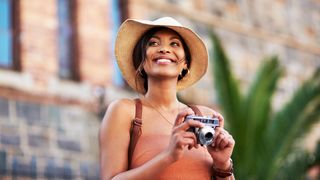
- The Quick List ↩
- Best overall
- Most versatile
- Best full frame
- Best action
- Best hybrid
- Best for size
- Best waterproof
- Best luxury
- Best for kids
Honorable mentions
Comparisons.
- How to choose
- How we test
The best travel cameras have to do one crucial thing – be better than your phone. Even though the best camera phones can produce great images, you just don't get the same quality as you would if shooting with one of the best point-and-shoots or best mirrorless cameras . Smartphones are restricted by smaller sensors offering lower still and video quality, reduced low light performance, and minimal control over depth of field (for those blurry backgrounds).
To be a top traveling companion, the best travel cameras need to combine compactness with image quality, advanced features with simple operation, and ideally – the ability to share your holiday photos and vacation videos quickly.
In this guide, I'll look at mirrorless cameras that offer the best image quality and more versatility than compact systems, but at the cost of increased size and weight. Compact cameras, perfect for keeping on you at all times, won't weigh you down, and are simple to use – although fixed lenses limit their versatility. And finally, action cameras that are robust cameras made for wild adventures!
Gareth is the Reviews Editor at Digital Camera World, and the person in charge of approving all the latest camera-related tech. He never misses an opportunity to travel, or an excuse to take photos while traveling, so is best placed to judge what are the best travel cameras for all sorts of different vacations and adventures.
The Quick List
Below are my top picks for the best travel camera to buy right now. If you want more information on each camera – you can find more comprehensive entries for each model further down the page .

Travel cameras should be small, light, and feature-packed. The Fujifilm X100VI ticks all of those boxes, with a diminutive size, but 40MP images and 6.2K video. And does all this while looking great, with some stunning retro charm. Although the fixed lens will be limiting to some.
Read more below ↓
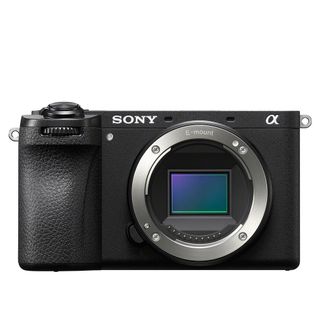
Don't let its compact size fool you, the Sony a6700 is a pocket powerhouse. Best of all, you can use any of the huge selection of E-mount lenses to make this a versatile pick for everything from city breaks to safaris, although big lenses do throw the off the balance of the small body.

Despite aging a little, the Sony A7 III still offers some features that are competitive with new models like IBIS, auto-tracking, and 4K video. Best of all, the camera is incredibly well-priced, making it the best option for traveling with a pro camera without worrying too much about damaging expensive kit.

The name GoPro is basically now synonymous with action cameras, and the latest GoPro Hero12 Black takes all the powerful features from the previous models and ups the image and video quality even further. However, the sensor still struggles a little in low light.

The Fujifilm X-S20 is a camera made for hybrid shooters, with great quality stills, but is set apart by its deceptively powerful video skills. This makes the X-S20 the perfect travel camera for any creator who is a versatile and lightweight camera that won't break the bank.
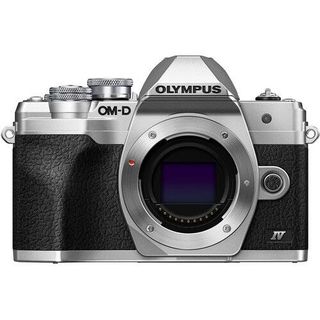
When picking the best travel camera, portability is essential. If you want to fit a whole photographic kit – that's a camera and several lenses into a bag, then the dinky but mighty Olympus OM-D E-M10 Mark IV is one of the best transportable camera systems you can get.
View the full list ⇩
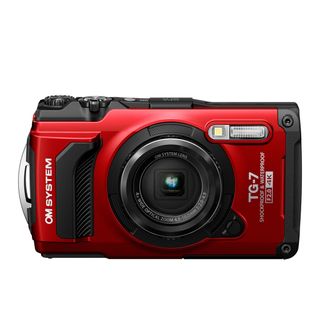
If you're planning on a coastal adventure then you need a camera that is fully waterproof and rugged enough to take on the most challenging adventures. This camera offers better stills than your average action cam, so if photos are your main priority – the Tough TG-7 is my top pick.
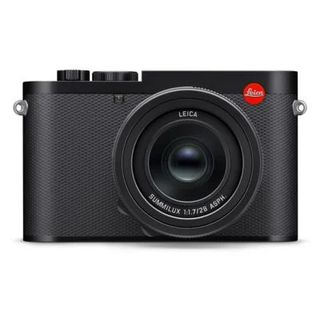
If you like to travel in style then you can't get much classier than a Leica camera. The Leica Q3 might be a lot pricier than anything else on this list, but the cool factor is unrivaled. Also, it takes pretty incredible photos and videos with a huge 60MP full-frame sensor in a compact body.

If you are looking for a camera to give to a budding young travel photographer then the Kodak Pixpro FZ55 offers a simple-to-use camera, but with enough features to get creative. And at close to $100, it won't break the bank if an accident should happen to the camera.
The best travel camera in 2024
Why you can trust Digital Camera World Our expert reviewers spend hours testing and comparing products and services so you can choose the best for you. Find out how we test.
Best travel camera overall
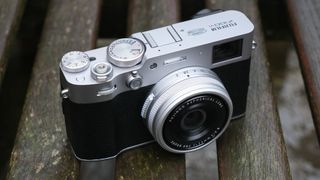
1. Fujifilm X100VI
Our expert review:
Specifications
Reasons to buy, reasons to avoid.
✅ You want a pocketable camera: the Fujifilm X100VI is a very compact camera, the whole package of camera and lens are so small that you can easily slip this into a jacket or rucksack pocket. ✅ You want a camera that looks good: The X100VI is easily one of the best-looking cameras you can buy. The stunning retro looks of old-school film cameras are matched with superb build quality.
❌ You want a range of lenses: the lens is fixed on the X100VI, so you are stuck with the 23mm focal length, although its digital cropping modes give the illusion (but not performance) of more focal lengths ❌ You want a cheap travel camera: the X100VI has a premium price tag, and there are options that produce a similar image quality, if you don't mind a different style of camera that is.
If you are looking for a camera for traveling, then one of the major things to look out for is something small and lightweight that can easily slip into a bag or a jacket pocket and won't be a drag to carry around for long periods – enter the Fujifilm X100VI .
The X100VI is a fixed-lens camera, which means that it has a single lens that can't be changed. The lens is 23mm, or equivalent to a 35mm length lens on on a full-frame camera, a perfect length for travel photography as it is wide enough to get in landscapes and street scenes, but narrow enough for portraits and family shots. While there are converters available for the X100V to change the length of the lens, I find these have an adverse effect on image quality, but the X100VI does have a trick to crop images when taking them to give the illusion of additional focal lengths, although at a reduced pixel count.
The X100V 40MP photos however are stunning and packed with detail. There is also human, animal, bird, and vehicle autofocus tracking, so you can snap away with confidence that your shots will be in focus. Finally, image stabilization helps cut out hand jitters in low light or shooting video, for more stable footage.
For those who want to share travel snaps as you go, you get access to Fujifilm 's awesome film simulations and custom recipes, which takes the work out of editing, and with WiFi and Bluetooth connectivity and the Fujifilm X App, you can quickly share ready to post photos and video to social from your phone.
The X100XI form factor and tilt-only screen mean this is not the most ideal camera for video on this list, but you can get 6.2K (cropped), 4K, or HD video with slow motion reaching 240 frames per second. If you are more serious about video then check out the Fujifilm X-S20 below .
The X100VI's design will certainly catch a few eyes while traveling. The camera is lovely to hold, made with premium materials, and with a wonderful hybrid optical viewfinder that shows either the optical view or how it looks through the sensor with a flick of a button. However, one major downside for travel – the X100VI lens is not weather-sealed without an adapter, which comes at an additional cost.
Speaking of cost, this premium camera comes at a premium price, with some similar tech available for less in other models. But for the build quality and features, I think it does a lot to justify its higher price, but if you want the best compact camera, there is nothing better than this.
Read more: Fujifilm X100VI review
- Back to the top ⇪
The best travel camera for versatility
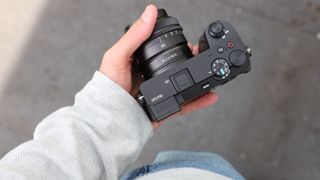
2. Sony a6700
✅ You want a compact and lightweight camera: the a6700 comes with Sony's top specs in its most portable body. ✅ You want a great hybrid camera for content creation: not just a great camera for stills, the a6700's 4K video with excellent tracking and stabilization offers a killer hybrid experience.
❌ You have big Sony lenses: while you can use any E-mount lens, the a6700 becomes very front-heavy with big lenses, but Sony has plenty of excellent smaller lens options. ❌ If price is an issue: the a6700 is a top camera but comes with a price to match. There is a lot of cheaper options if you can compromise on specs from Nikon, Canon, Fuji, and Sony cameras in its ZV line.
The Sony a6xxx series has always been a favorite among photographers who value portability and versatility, with Sony continuously managing to squeeze more impressive features into the range while maintaining its incredibly compact form factor. The latest addition, the a6700, is a step forward from its predecessor, the a6600, boasting upgraded autofocus and in-body image stabilization.
The camera retains the compact APS-C design, although the button layout has been improved, as well as the menu system making for a more enjoyable to use camera, although with a body as compact as this, the layout is still a little cramped. This is especially true when handling larger full-frame lenses with the a6700, which remains somewhat awkward, but if you opt for Sony's smaller enthusiast lenses, you'll find a better balance, but distinguishing between the two formats can be confusing.
Although this lens conundrum is also one of the camera's biggest strengths. The a6700 can take the huge range of E-mount lenses from Sony, or third parties like Sigma and Tamron – which makes this one of the most versatile cameras you can get. The a6700 paired with a compact lens can be small enough to slip into a pocket for city breaks or can be attached to the end of a big telephoto zoom for safaris.
For keen photographers, the a6700 is capable of some stunning images, and improved tracking, faster shooting speeds, and in-body image stabilization make it easier than ever to ensure you get top photos. For hybrid creators, the a6700 also has impressive 4K60p video capabilities, oversampled from 6K, although if video is more your thing that stills, the Sony ZV range like the ZV-E10 II , might be a better choice.
Although pricier than its predecessor and some competitors, the a6700 offers a lot of impressive features, although there are a lot of challengers from Nikon , Canon , Fuji, and Panasonic nipping at its heels if you can compromise on the a6700's compact design.
Read more: Sony a6700 review • Best lenses for Sony a6700
Best full frame on a budget
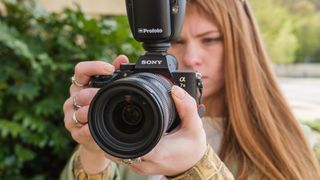
3. Sony A7 III
✅ You want full frame quality: full frame cameras can produce more focus separation and are better in low light, the A7 III is the most affordable step into full frame. ✅ You want a camera to use outside of traveling: the A7 III is a pro-level camera that is not just for travel, you can shoot brilliant photos all year round with a multitude of lenses available for different subjects.
❌ You don't want the expense of lenses: the cost of lenses can add up, especially ones for full-frame cameras, if you want to keep costs low, choose a fixed lens camera or an option with smaller cheaper lenses. ❌ You want a small camera: the A7 III isn't huge, but it also isn't small. With a lens attached, it is going to take up quite a bit of room in a bag, and won't be sliding in any pocket.
While the Sony A7 III might be the oldest Sony Alpha camera still being sold as new, even being replaced by a newer Sony A7 VI, it more than holds its own today. Any photographer looking for an excellent full-frame hybrid camera for traveling should seriously consider this camera as an option.
Why? Well, I don't think there is a better value full-frame camera out there, which when traveling can take some of the jeopardy out of damaging or losing your incredibly expensive kit.
It might be getting on a little, but the camera still has a very competitive 24.2MP back-illuminated image sensor, which delivers great tonal range and makes high ISO settings possible, which anyone who is shooting a lot in low light on their travels will really appreciate. A 5-axis image stabilization system also delivers less shake when shooting at night, or capturing video.
And if you are also looking to get some video footage on your travels then the A7III has very capable 4K video, although has been surpassed by a few other models on this list which would be more suitable if video is a priority.
The A7III has a speedy and accurate 696-point AF system, and while not the latest algorithms, the A7 III also has some solid human face and eye tracking, so you can take reliably focused photos of your friends, family, or any interesting denizens you meet out on your travels.
Whilst the A7III can be thrown a little off-balance with big pro lenses, Sony's lens range is extensive and there are many smaller primes to suit this camera perfectly for those who don't want to carry a lot while traveling. Or superzoom lenses like the Sony FE 24-240mm will empower you to capture everything from near to far.
Read more: Sony A7 III review • Best lenses for Sony A7 III
Best action camera for travel
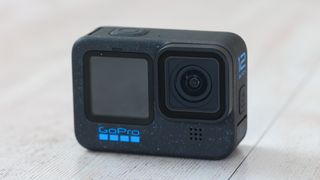
4. GoPro Hero12 Black
✅ You need a camera that can survive the elements: if you are planning on getting wet, cold, or sandy then the GoPro can survive it all. ✅ You want a tiny camera for attaching to things: you can stick this to a helmet, handlebars, surfboards, you name it, there is a likely a mount for it.
❌ You want the best low-light performance: the GoPro's sensor isn't especially good in low-light ❌ You want to take a lot of photos: the GoPro's wide-angle lens takes interesting perspective photos, but they are quite limited
The Hero 12 Black brings back (almost) everything that was great about the Hero 11 Black and refines it. Offering more shooting options with log recording as well as a much better audio recording experience with new Bluetooth options as well as the ability to record from dual audio sources.
However, one omission that might disappoint some users is the GoPro Hero12 is the first hero in several generations to not include GPS, which could well be make or break depending on your passion for geo-tagging your images. If this does completely turn you off, then check out the Hero11 Black, for mostly the same hardware, plus GPS.
Ditching GPS however does extend the battery life of the Hero12 which is definitely welcome, and will save you from having to switch batteries in environments where it isn't always easy to do so.
Down to brass tax. When it comes to video, the colors and quality of GoPro's footage still put it out front compared to competitors – in good light that is. The Hero12 unfortunately suffers quite a lot in low light, with the smaller pixels in its 1/1.9-inch not up to its chief rival – the DJI Osmo Action 4. But while GoPro hasn't cracked lowlight video, for anyone who wants detail in bright environments, we'd still call the 12 Black the best action camera for video.
GoPros' HyperSmooth 6.0 image stabilization continues to be incredible at producing gimbal-like footage without the gimbal, and the AutoBoost feature seamlessly gets the steadiest footage at the widest crop. New HDR modes and well as Log recording also work well in bright environments to push details in the highs and shadows further.
Finally, photos are solid, again in good light, although the very wide angle lens of 156º limits how good this is as a photography camera, but in areas you wouldn't dare take a mirrorless or compact camera, it's perfect for getting a few snaps.
Read more: GoPro Hero 12 Black review • Best GoPro accessories
Best hybrid travel camera
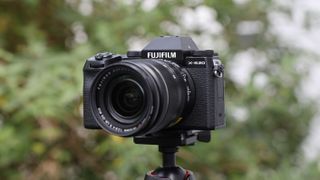
5. Fujifilm X-S20
✅ You shoot video and photos: the Fujifilm X-S20 is the best of both worlds, with great-looking photos and awesome video skills too! ✅ You want to balance price and features: the X-S20 offers a lot for its price, and it is one of the best-value cameras around, you will struggle to find matching video specs at this price point.
❌ You don't really care about video: Fuji's X-T5, X-T50, and X100VI might suit photographers more than the X-S20 with higher megapixel counts for stills. ❌ You might need weather resistance: the X-S20 is not weather-sealed, so if you plan to get adventurous, a camera that can handle dust and water might be a better choice.
When I tested the Fujifilm X-S20 I was just so impressed at the amount of features that Fujifilm had managed to squeeze into its petite body – it's not just a great stills camera, it is also one of the best video cameras available, and the cherry on top, it is really well priced! For anyone looking for a hybrid camera to shoot a mix of photos and video, I think this is the best hybrid camera for any traveler right now.
Fujifilm chose not to update the X-Trans IV sensor from the X-S10, but this sensor despite its age still holds up very well today when it comes to stills. The X-S20 is also able to use Fujifilm's excellent film simulations and programmable film recipes to create ready-to-use images straight from the camera, which makes any regular social media posting that much easier. The new X-Processor 5 also brings brand new subject recognition and tracking autofocus, making taking photos on the fly quicker and more reliable.
Despite its compact size, the X-S20 is a deceptively powerful video camera. The new processor combined with the modest resolution sensor means the X-S20 is capable of 6K video using the entire sensor (open-gate). The camera is also capable of numerous codecs and F-Log for getting in-depth with color grading. The subject recognition and tracking also carry through into videos and there are dedicated vlogging video features too.
Some might prefer the classic retro style like the X-T5 or X-T30 II, but with fewer manual dials, the X-S20 is a more user-friendly camera, with a more useful fully articulating screen than any of the X-T range. The camera is small, but handling is great with enough of a comfortable grip for long days, and the camera pairs really well with Fujifilm's small zoom and prime lenses, making traveling light with a kitted-out X-S20 a little easier. While the price is a little higher than the X-S10 that preceded it, I think the price bump is justified as this is one capable camera for traveling.
Read more: Fujifilm X-S20 review & best lenses for Fujfilm X-S20
Best travel camera for size
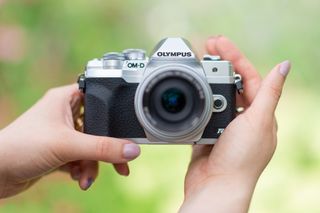
6. Olympus OM-D E-M10 Mark IV
✅ You want a small system: the whole OM Micro Four Thirds system is tiny, with small cameras and lenses, so you can take a lot more gear to cover more subjects. ✅ You want a good-looking camera: with a cool vintage style based on Olympus's OM film cameras, the E-M10 IV looks as good as the footage it shoots.
❌ You shoot a lot in low light: the Micro Four Thirds sensor in the E-M10 IV doesn't handle low light as well as larger sensors, not good for frequent nighttime shooters. ❌ You won't use the retro dials: if you are looking for just fast auto controls then the dials on the top of the E-M10 IV will be largely redundant for your needs.
When picking the best travel camera, we're focusing on portability, and the dinky but mighty Olympus OM-D E-M10 Mark IV is one of the best portable cameras around if you are looking for a whole system including lenses that can easily slip into a bag. The best Olympus lenses include positively tiny optics that can go a long way for travel photography, helping you keep your kit and weight size down. So if you are the type of carry-on-only travel photographer but with big photography ambitions then this is for you.
Not only does it have an incredibly lightweight body, but the camera will look great on your travels too, with a cool retro design that harks back to Olympus's long pedigree in film cameras. The camera has tactile dial-led controls for anyone who wants to get creative with manual photography, although don't let that fool you into thinking the camera is complicated, as there are lots of automatic modes and helpful features built into the camera.
The OM-D E-M10 Mark IV uses the smaller but still powerful Micro Four Thirds sensor. This has some slight disadvantages in terms of low-light capabilities, so if you like to go out a lot at night when you travel, then a larger sensor might be better for you.
But Micro Four Thirds does have one big advantage, it effectively doubles the focal length of any lens mounted to the camera; so a 50mm will behave like a 100mm, so if you are about to head off on safari, then this could make all the difference to getting up close to wildlife. Its snappy burst shooting, its accurate autofocus, and its impressive 4K video will also all assist you with creating amazing content. It's a terrific all-around camera.
Read more: Olympus OM-D E-M10 Mark IV review & Best Olympus lenses
Best waterproof compact travel camera

7. OM System Tough TG-7
✅ You want a rugged adventure camera: the TG-7 can certainly withstand some serious adventuring with a rugged water/dust/freeze/drop-proof build. ✅ You want a photography-first adventure camera: the TG-7 puts photography first and foremost, offering a better experience than smaller fiddly action cameras.
❌ You want to strap the camera to things: while action cameras have numerous accessories to strap to your sports equipment, there is far less for the bigger TG-7. ❌ You only care about video: if you are just looking for the best rugged video camera for travel, then action cameras have you covered (see below).
Following the acquisition of Olympus's camera division, the OM System TG-7 is essentially an update to the much-loved Olympus Tough TG-6 under a new brand name. Although that camera has long been the top-regarded travel compact for adventurers who are as invested in photos as video. Action cameras might be smaller and just as hardy, but can't compete with the TG-7 for photography experience.
The TG-7 is ready for any travel adventure and is water-proof, dust-proof, crush-proof, drop-proof, and freeze-proof, so whether you are hiking, climbing, swimming, or otherwise take you to the hottest deserts to the coldest tundras, the camera should come out the other side unscathed.
The TG-7 might have a relatively conservative 12MP resolution, although this helps dramatically when it comes to low-light images, as each pixel is larger allowing it to capture more light. Why is this important? Well if you are shooting in darker underwater environments, in gloomy forests, or at night, then you will get higher-quality images.
The Touch also has RAW images, so you can get even more creative control over the final edit of your images. The camera also has a pretty incredible macro mode as well if you find some small details on your travels that you have to capture.
While it might not be up to the same standard as the best action cameras for video, the Tough can capture decent 4K video, and will get some perfectly serviceable footage for social and YouTube of your wild adventures!
Read more: OM System Tough TG-7 review
Best luxury camera for travel

8. Leica Q3
✅ You like to crop: the 60MP sensor allows for so much space to crop into which is made even easier with the lens's digital crop feature. ✅ You want the coolest camera: the X100VI might be uber popular, but the Q3 is arguably an even cooler camera to be seen with.
❌ You prioritize value: you can get much more feature-packed cameras for considerably less money than the Q3. ❌ You want to change lenses: despite the clever digital crop zoom, the fixed lens is still limiting for distant subjects.
If you are looking for one of the most stylish cameras to take with you on your travel adventures then the Leica Q3 ticks all the boxes. From the iconic German brand, the Leica Q3 is a camera that is designed to inspire camera envy wherever you go with its effortless cool style. Although, as ever with a Leica – it doesn't come cheap.
But you're not just paying for style and a red dot logo, the Leica Q3 is an all-round fantastic travel camera. Its compact size and fixed lens make it easy to carry around while exploring new places, and I had a really good experience shooting with this camera around London.
The 60MP sensor delivers stunning images with the Summilux 28mm f/1.7 ASPH. being incredibly sharp, and while the fixed nature of the lens might appear limiting, its digital crop feature is incredible. With a huge 60MP to play with the Q3 can crop to the equivalent of 90mm and still produce 8MP images, so its almost like you have a zoom lens. The max aperture of f/1.7 and the full frame lens also mean you can get beautifully rendered out-of-focus backgrounds for some pro-looking images.
Autofocus is quick and accurate, there are new modes for tracking human subjects, which work really well, and animal subjects, which work less well. Animal recognition was a little erratic, but then this isn't really intended as a safari camera so I can let it off a little here. Additionally, good dynamic range and the Q3's unique Leica-rendered color and monochrome modes give fantastic out-of-camera images ready for sharing on the go via the excellent Leica Fotos app.
When it comes to video, while the Q3 has solid video specs, this is far from a hybrid camera. The camera's 8K video capabilities shine, providing a lot of detail, although I would question if 8K recording is really necessary, the Q3 also offers great 4K for smaller and more usable files. Image stabilization is also good, but not up to the standard of other manufacturers.
But for style plus substance, the Leica Q3 is a great option for travel – if you can afford it that is.
Read more: Leica Q3 review
Best travel camera for kids

9. Kodak Pixpro FZ55
✅ You want a camera it's okay to break or lose: if you are the type of person who worries about expensive camera gear while traveling, then this $100 camera might save you some stress. ✅ You want a super simple camera: this is perhaps one of the most straightforward frill-less cameras you can buy.
❌ You want good image quality: images are not great quality, and bested by some phone cameras. ❌ You want to shoot video: max 1080p video is woefully low quality for modern devices.
The Kodak Pixpro FZ55 is one of the cheapest cameras you can buy brand new, and while it is a heavily compromised camera (more on that in a second), it serves a purpose as a fantastic option for traveling while not having to worry about expensive gear.
While it would suit any travel photographer who doesn't want to stress about damaging or losing expensive gear, the FZ55 is especially perfect for a child showing a budding interest in photography but is too young to be entrusted with a smartphone or larger gear.
The Kodak is robust and can survive a little rough and tumble. It is incredibly simplistic to use, so won't confuse or overwhelm anyone trying to get to grips with photography for the first time. While the 5x optical zoom lens also gives the freedom to play with framing.
The downside to the camera being so affordable is that the image quality is sub-par, with photos having a distinctive compact camera look to them that is reminiscent of the early years of digital photography. While smartphones with their intensive processing of images can take better photos, that isn't the point of having a simplistic dedicated camera. Plus, grungier imperfect photos are all the rage right now on social media, so get on trend.
Video is also abysmal, with the camera maxing out at Full HD 1080P footage, which is poor quality and way behind the 4K video that is now standard in almost every other camera.
Despite all these flaws I am still recommending it for the reasons I opened with, if you a looking for a camera where simplicity and affordability come first, the Kodak Pixpro FZ55 is definitely worth considering.
Read more: Kodak Pixpro FZ55 review
- Ricoh GR III / GR IIIx : this pair of street photography cameras have exploded in popularity recently due to their combination of large APS-C sensors and tiny compact bodies producing some excellent photos. A cramped design and outdated AF and video specs however have bumped them off my list.
- Sony A7C II : as the full-frame counterpart to the Sony a6700, the A7C II is every bit as impressive, but somehow squeezes an even larger sensor into the same size body. However, I prefer the a6700 for this list due to its lower cost, and its APS-C sensor is plenty good enough.
- Nikon Z fc : a stylish entry from Nikon for those who love retro cameras, although there are just a few too many retro cameras around this price point with the Nikon not quite getting its noise ahead on price or features – but for those invested in Nikon Z lenses, this might be a winner.
- Insta360 X4 : if you want to record your adventures in 360º then the best camera right now is the Insta360 X4, not the cheapest camera for casual users, but the footage is well worth the money if you are keen to invest.
How to choose the best travel camera
These are five key things to look out for when choosing the right travel camera for your needs.
1) Image quality: Ask yourself how you will use any photos or videos you capture. If you only plan to share content online on social media then any of the above cameras will be suitable. If you plan to print your pictures, though, then mirrorless cameras with larger sensors and higher megapixel counts will produce better-quality results.
2) Focal range: What kind of range do you need for your traveling activities? Compact cameras can have impressive zoom ranges, but to achieve their tiny size they often lack quality compared to mirrorless cameras. For mirrorless cameras, what lenses are available? So-called standard zooms are a great option for all types of travel, but they can also be large and heavy. A wide-angle lens might be best for capturing cities and landscapes, or if you are going to see wildlife or a sporting event then a compact telephoto lens might be best.
3) Size and weight: If you're going on vacation then the last thing you want to take is a heavy kit – especially given things like baggage restrictions when traveling. With that in mind, both your camera and lens(es) need to be small and light. If you want something that can fit in your pocket, get a compact camera – but if you don't mind taking a bag, a mirrorless system with one or two lenses could be more versatile.
4) Simplicity: Don't want to get bogged down with camera settings? Most modern cameras have a range of auto modes – especially compact cameras, which take away the stress. Advanced modes and complicated controls don't usually mix with spur-of-the-moment snaps, so decide what is important to you and pick your camera based on that.
5) Price: The cameras in our list have a range of prices, and we try to include cameras that suit every budget. The price of a camera usually reflects its capabilities, although all the options listed here will take great images and video – so try to strike the right balance between what you need in a camera and what you can afford.

Is it better to use phone or camera for travel?
This really depends on what you are taking photos of and where those photos are going. Your phone can handle a few quick snaps for social media, but if you want the best quality for printing then a camera with a much larger sensor has the edge.
You also need to ask yourself if your travel plans make using a camera possible. Phones are so small and quick to use that they go where cameras are too bulky and slow to shoot. A great compromise is a compact camera which is the best of both worlds.
Is a DSLR or mirrorless camera better for travel photography?
As a travel camera, mirrorless cameras are usually the better choice for most people. They are much smaller and lighter than DSLRs, and also usually have a selection of smaller and lighter lenses to match. This makes traveling easier as it takes up less space and weight in increasingly restricted carry-on bags.
Mirrorless cameras also are generally newer than DSLRs and most likely have more modern technology, making photography and video easier to capture and of better quality.
What size camera lens is best for travel?
Again, this comes down to what your travel plans entail and what you plan to shoot.
A good place to start is with the kit lens that comes bundled with many cameras as this will cover the most commonly used focal ranges. Kit lenses are generally very small and light, although the cheapest kit lenses do not typically deliver the best image quality, so you might want to think about upgrading as you develop.
I personally travel with a single wide aperture prime lens, with my preferred length being 35mm. A prime lens such as this is a versatile focal length for different subjects, is generally a small lens and wide apertures are great in low light.
Then there are superzoom lenses that cover the widest range possible in one lens, while also trying to ensure that lens remains a travelable size. I'd recommend checking out the best lenses for travel photography to see what's right for you.
How we test travel cameras
When we are reviewing cameras, we carefully think about what scenarios each camera could be used for. So when considering which cameras would make ideal travel cameras, we judge each camera on how small and lightweight it is for easy packing and transport, as well as carrying for long periods of the day while out exploring.
We also consider the technical capabilities of each camera, and how suitable they are specifically for travel photography scenarios from beach vacations, to safaris, to city breaks. Finally, we consider the price of the cameras to select options that cover a range of budgets and requirements.
We use our real-world experience with each camera and our in-depth camera knowledge to determine a final selection of top cameras that we would recommend as the ideal camera traveling companions.
Get the Digital Camera World Newsletter
The best camera deals, reviews, product advice, and unmissable photography news, direct to your inbox!
Gareth is a photographer based in London, working as a freelance photographer and videographer for the past several years, having the privilege to shoot for some household names. With work focusing on fashion, portrait and lifestyle content creation, he has developed a range of skills covering everything from editorial shoots to social media videos. Outside of work, he has a personal passion for travel and nature photography, with a devotion to sustainability and environmental causes.
- James Artaius Editor
- Basil Kronfli
Related articles

- Reviews TV REVIEWS v1.11 HEADPHONES REVIEWS v1.8 MONITOR REVIEWS v2.0 SOUNDBAR REVIEWS v1.3 MOUSE REVIEWS v1.5 KEYBOARD REVIEWS v1.3.1 PRINTER REVIEWS v1.2 VACUUM REVIEWS v1.3 ROBOT VACUUM REVIEWS v0.8 ROUTER REVIEWS v0.8 PROJECTOR REVIEWS v0.9 TOASTER REVIEWS v1.0 AIR FRYER REVIEWS v1.0 BLENDER REVIEWS v1.0 MICROWAVE REVIEWS v1.0 DEHUMIDIFIER REVIEWS v1.0 AIR PURIFIER REVIEWS v1.0 KEYBOARD SWITCH REVIEWS v1.0 SPEAKER REVIEWS v0.8 CAMERA REVIEWS v0.12.1 LAPTOP REVIEWS v0.8.2
- What's New COMPUTER Monitors, Mice, Keyboards, Printers, Routers, VPNs, Keyboard Switches, and Laptops HOME ENTERTAINMENT TVs, Soundbars, and Projectors AUDIO Headphones and Speakers HOME Vacuums, Robot Vacuums, Dehumidifiers, Mattresses, Humidifiers, and Air Purifiers PHOTO & VIDEO Cameras KITCHEN Toasters, Air Fryers, Blenders, and Microwaves REVIEW PIPELINE See upcoming reviews, cast your vote, and suggest products
- Newsletters
- Table of Contents
- Best Camera
- Best Full Frame
- Best Mid-Range
- Best Budget
- Best Point-And-Shoot
- Best Vlogging
Notable Mentions
Recent updates, all reviews, the 6 best travel cameras - fall 2024.

A good camera can be an indispensable travel companion, letting you capture your adventures abroad to share with friends and family. For many, the best digital camera for travel is the one you've already got in your pocket—your smartphone. If you want to step up your photography game, however, there are plenty of great cameras out there that won't take up too much space in your luggage. While it can be hard to narrow them down, it's important to consider things like portability, battery life, build quality, your own ergonomic preferences, and, of course, your budget.
We've bought over 105 cameras, and below, you'll find the best travel cameras we've tested. If you're specifically looking for a point-and-shoot camera, check out the best compact cameras for travel instead. Or, if you're interested in capturing beautiful landscapes on your travels, the best cameras for landscape photography might also be of interest. Travel vloggers can also look at our top vlogging picks .
Best Camera For Travel

The OM SYSTEM OM-5 is the best digital camera for travel that you can get. As part of the Micro Four Thirds (MFT) system, it offers a balanced mix of portability, ruggedness, and image quality. Though it isn't as heavy-duty as higher-end models like the OM SYSTEM OM-1 Mark II or the older Olympus OM-D E-M1 Mark III , it has a more compact body that makes it better for travel. Plus, it's compatible with a wide selection of portable MFT lenses that will keep the overall size of your kit down.
Beyond its relatively small size, the camera is weather-sealed and feels well-built overall. It has an excellent five-axis in-body image stabilization (IBIS) system, which can help you get steadier shots at slower shutter speeds or while recording vlogs. That said, the OM-5 doesn't have the longest battery life, so you might have to pick up a spare battery for long days on the go, but overall, this is an excellent travel camera for the price. If you want to save even more money, the older Olympus OM-D E-M5 Mark III is nearly identical and can be found for less if you buy used, though it uses an older processor and lacks some extra features like 'Live ND' mode.
See our review
Best Full Frame Camera For Travel

If image quality is your top priority, the Sony α7C II is one of the best cameras for travel photography you can buy. It's one of the few full-frame cameras on the market that boasts such a compact size. While it's still the largest option on this list, and full-frame lenses are typically larger, it's impressive how compact Sony made this camera while including features like IBIS and a fully articulated screen.
The real star here, of course, is the camera's high-resolution full-frame sensor, which has plenty of dynamic range and great noise handling in trickier lighting conditions. On top of that, the camera has a fantastic battery life and a sturdy, weather-sealed body. That said, its ergonomics leave a little to be desired, particularly when shooting through the tiny viewfinder. If you want to save some money, the original Sony α7C is practically a bargain now, though the new model is more well-rounded, with better video features and a higher-resolution sensor.
Best Mid-Range Camera For Travel

If you can do without IBIS and want something a bit more affordable, the Fujifilm X-T30 II is a great mid-range option. It uses an APS-C sensor and has a portable, lightweight body that's ideal for traveling. While it lacks more premium features like weather-sealing and advanced video specs, it's still a relatively sturdy camera, and its dedicated exposure dials give you more hands-on control over camera settings.
Aside from its portability, the X-T30 II uses a relatively high-resolution APS-C sensor that delivers excellent image quality straight out of the camera. Film simulation profiles make the camera a blast to shoot with and let you change up the look of your photos without having to do any post-processing. On top of that, the camera has a decent autofocus system and a relatively long-lasting battery, making it an excellent travel camera for the price. If you can stretch your budget, its successor, the Fujifilm X-T50 , offers better video features, IBIS, and a higher-resolution sensor, but it's also significantly more expensive.
Best Budget Camera For Travel

The Olympus OM-D E-M10 Mark IV is one of the best budget cameras we've tested for travel. Like the higher-end OM SYSTEM OM-5 above, it uses a Micro Four Thirds sensor, making for a remarkably portable camera kit with plenty of lightweight and affordable lens options. It's also a great choice for beginners, thanks to simple controls and easy-to-use creative shooting modes.
This is also one of the only cameras at this price point to feature IBIS, which can help capture handheld images at slower shutter speeds and comes in handy for stabilizing videos and vlogs. That said, this is still an entry-level model, so it doesn't have the greatest build quality. Its autofocus system can also be sluggish with faster subjects. If you'd prefer a camera with a more reliable autofocus system, the Canon EOS R50 is an amazing alternative and comes a bit cheaper. However, its lens options are more limited, and it's less portable overall.
Best Point-And-Shoot Camera For Travel

A premium point-and-shoot is the way to go if you need something compact but more capable than your smartphone camera. The Sony RX100 VII has been going strong for several iterations, and for good reason. This latest model uses a stacked 1-inch sensor, so image quality is very solid for its class. It's also one of the few cameras that's actually pocketable, so you can bring it with you wherever your travels take you, and its built-in lens has a fairly long zoom range that's great for travel snapshots of everything from landscapes to far-away subjects.
Be aware that compact cameras like this have a limited battery life, though you can always bring a spare battery or a portable battery pack to charge it on the go. The RICOH GR III is a great alternative if you want a more minimalist camera. It doesn't have a viewfinder, and its fixed focal length lens is less versatile than the zoom lens on the Sony. However, it has a larger APS-C sensor that delivers excellent image quality and is better suited to low-light situations. On the other hand, if you're looking for something cheaper, you can still find older generations of the RX100 on eBay and other used camera retailers.
Best Vlogging Camera For Travel

If you prefer to vlog about your travels rather than photograph them, try the Sony ZV-1. Like the Sony RX100 VII above, it uses a 1-inch type sensor, performing similarly when it comes to image quality and autofocus, but it has a different design, with no viewfinder and a shorter zoom range. On the flip side, it's one of the only compact cameras to feature a fully articulated screen that's ideal for recording yourself. Plus, it has a better built-in mic than most point-and-shoots, complete with a detachable windscreen to cut down on wind noise while recording.
If you prefer a wider field of view, consider getting the newer Sony ZV-1 II , which has a new wide-angle lens that's a good fit for walk-and-talk vlogs. The camera performs similarly otherwise, but Sony also removed optical stabilization from its lens. For that reason, and because of its price, the original ZV-1 is a better deal for most travel vloggers and one of the best video cameras for travel if you need something compact.
- Fujifilm X100VI: The Fujifilm X100VI is one of the best point-and-shoot cameras on the market, with a larger APS-C sensor that captures excellent images. However, it's less portable, more expensive, and a bit more niche than the Sony RX100 VII, with a fixed focal length that's less versatile for everyday travel photos. See our review
- Nikon Z f: The Nikon Z f is an excellent full-frame option for travel, particularly if you like vintage-style cameras. It has a retro-inspired and relatively portable design but isn't as compact as the Sony α7C II. See our review
- RICOH GR IIIx: Like the RICOH GR III, the RICOH GR IIIx is a great alternative to the Sony RX100 VII. It's nearly identical to the GR III but features a 40mm focal length lens instead of the wider 28mm focal length on the GR III. The Sony is still more versatile for most travelers thanks to its zoom lens, better autofocus, and 4k video capability. See our review
- Sony ZV-E1: The Sony ZV-E1 is a full-frame camera that's even more compact than the Sony α7C II. It's a great choice for high-quality travel videos, with a sensor optimized for low light. However, it lacks a viewfinder and is generally less versatile for photographers and hybrid shooters. See our review
Aug 29, 2024: We replaced the Fujifilm X100V with the Fujifilm X100VI as a Notable Mention and added a comparison to the Fujifilm X-T50 in our discussion of the Fujifilm X-T30 II.
Jul 04, 2024: We added the RICOH GR IIIx to the Notable Mentions as another option for those looking for a minimalist compact camera.
Jun 04, 2024: We brushed up some of the text in the article for clarity and reviewed the picks to ensure they're still current.
May 08, 2024: We reviewed the cameras included in the article, including their price and availability, to ensure the article is up to date and adequately meets user needs.
Apr 10, 2024: We've replaced the Sony α7C with the Sony α7C II because it's more widely available and offers some advantages for video work. We also removed the Sony ZV-1 from the Notable Mentions, making it the 'Best Vlogging Camera For Travel.' Finally, we added the Nikon Z f to the Notable Mentions.
Our recommendations above are what we think are currently the top travel cameras for most people, according to their needs. We factor in the price, feedback from our visitors, and availability (no cameras that are difficult to find or almost out of stock in the U.S.).
If you'd like to choose for yourself, here's the list of all of our camera reviews, ranked by their suitability for travel photography. Be careful not to get caught up in the details. There is no single perfect camera. Personal taste, preference, and shooting habits will matter more in your selection.
The best travel camera for 2024: the finest choices for your adventures
The best travel cameras for your next big trip
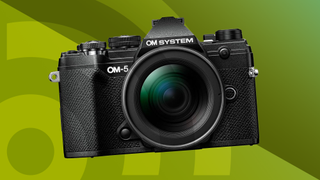
- 1. Best overall
- 2. Best travel compact
- 3. Best-looking
- 4. Best action cam
- 5. Best tough camera
- 6. Best premium compact
- 7. Best small full-frame
- 8. Best hybrid vlogger
- 9. Best for moving subjects
- 10. Best superzoom
- How to choose
- How we test
We’re often asked what is the best travel camera. The answer depends on what you plan to do with it: a city break is best shot with something small and sharp, while adventurous travels demand something more rugged. That’s why this list is so diverse. Down below you'll find everything from premium compacts to action cameras and mirrorless hybrids, all of which are great travel cameras in their own way.
After countless hours on the road, our favorite travel camera is the OM System OM-5. Thanks to a Micro Four Thirds sensor, it's usefully portable yet captures better images than a smartphone. It’s also weatherproof and offers the flexibility to swap lenses. That said, we know it won't be the right choice for every traveller.
We don't pick our top travel cameras on specs alone. We've tested them all out in the real world, to check factors such as handling, image stabilization and image quality. The idea of this guide is to give you an in-depth summary of our findings, to help make it easier for you to choose your ideal travel camera. If compact size is your number one criteria, it's also worth checking out our best compact cameras guide.
Top 3 picks
If you don’t have time to read our full list of the best travel cameras, you can use this summary for a quick overview of the top options for your needs and budget. When you find one that takes your fancy, use the links to jump to our full write-up.

The best travel camera overall
Squeezing a host of features into a compact, weatherproof body that’s compatible with a range of lenses, the OM-5 is the ideal travel camera.
Read more below

The best compact travel camera
If you want a camera that slips in your pocket but has smartphone-beating image quality, then the GR IIIx is well worth a look.
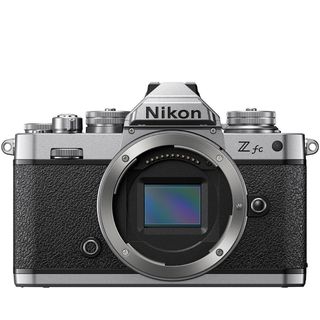
The best-looking travel camera
Don’t be fooled by its lovely retro looks: the Nikon Z fc is every bit the modern travel camera, with a useful touchscreen and top image quality.
Best by use-case
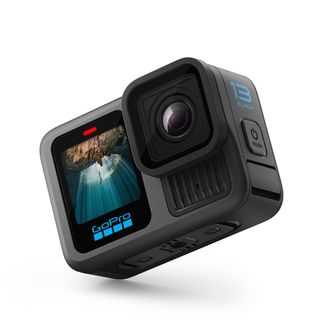
The best action camera for travel
With superlative stabilization, versatile 8:7 sensor for sharing videos to social, and new auto-detected Lens Mods, this is the best action camera for capturing intrepid travels.
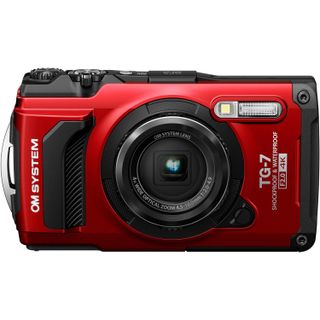
The best tough travel camera
When travels get tough, you need a camera that can keep up – which is where the rugged TG-7 comes into its own, with a hardcore build and simple interface.

The best premium compact
With a large sensor, 23mm focal length and small form factor, the X100VI is a powerful tool for street photography on your travels.

The best small full-frame camera
Combining a small form factor with a high-res 61MP sensor and fantastic autofocus, the Sony A7C R is the best full-frame camera for travel photography.

The best hybrid for travel vlogging
A capable sensor and automated settings, including a Vlogging mode, make the Fujifilm X-S20 an accessible tool for stills and video on the go.
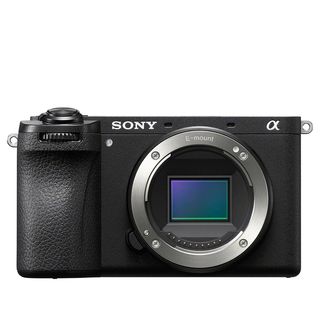
The best for moving subjects
The compact A6700 uses AI-powered autofocus to reliably snap on to animals, insects, cars and more. The Fuji X-S20 is better for video, though.
Load the next product...
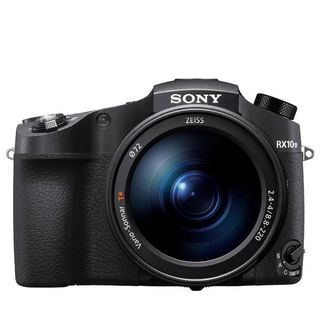
The best superzoom camera
Even with a 1-inch sensor, the Sony RX10 IV delivers sharp stills and video, with the added versatility of a generous 24-600mm zoom range.
Tim is TechRadar's Cameras Editor. He has more than 15 years' experience as a photographer and tech journalist. He's traveled widely in that time, including several years spent living and capturing images in Kenya. As a result, he's developed a deeply practical knowledge of what makes an excellent travel camera. Tim notes, "There's no one-size fits all travel camera, but all of the options recommended here share a few key traits: each is relatively portable, handles well while on the move and is capable of producing impressive holiday photos."
The best travel cameras in 2024
Why you can trust TechRadar We spend hours testing every product or service we review, so you can be sure you’re buying the best. Find out more about how we test.
Below you'll find full write-ups for each of the best travel cameras in our list. We've tested each one extensively, so you can be sure that our recommendations can be trusted.
1. OM System OM-5
Our expert review:
Specifications
Reasons to buy, reasons to avoid, om system om-5 sample images.
✅ You want a robust travel camera: Light enough to travel with but tough enough to deal with bad weather, the OM-5 is a ruggedly dependable camera.
✅ You shoot handheld a lot: The OM-5 has excellent image stabilization for stills, meaning you can cross a tripod off your packing list.
❌ You want the best image quality: Its Micro Four Thirds sensor is decent enough, but some rivals offer more pixels and better low light performance.
❌ You have large hands: Handling is surprisingly good for a small camera, but the grip is not very deep, especially for those with bigger hands.
The OM-5 represents a relatively minor update of the Olympus OM-D E-M5 Mark III , but its combination of talents make it an ideal travel camera in our book – particularly if you want the flexibility to change lenses. It shoehorns a lot of features into a compact, weatherproof body that's compatible with a wealth of equally small lenses. Most of its skills, including excellent in-body image stabilization and computational photography modes, are also designed with travelers and adventurers in mind.
Our tests found that the OM-5 delivers excellent video and stills quality for its size, helped by a stabilization system that gives you a high hit-rate of keepers. We also enjoyed the high-quality feel of the camera's dials, as well as in-camera software tricks, like Live ND and in-camera focus stacking, which are ideal for macro shots or blurring skies for an ethereal effect. Less good are the fairly average EVF resolution, 4K /30p limit for video and relative limitations of its smaller sensor, but these are all acceptable trade-offs considering this camera's size and price.
Read our in-depth OM System OM-5 review
- ^ Back to the top
2. Ricoh GR IIIx
Ricoh gr iiix sample images.
✅ You go on city breaks: It's small and discreet for city photography, where its poor battery life and less than desirable build quality aren't so much of an issue.
✅ You want smartphone-beating picture quality: Its large sensor and sharp lens, together with gorgeous color profiles, mean the GR IIIx produces lovely results.
❌ You want a powerful zoom: The GR IIIx's lens is fixed, which means it's sharp but it can't zoom in on distant action and landmarks.
❌ You shoot video a lot: With a basic video spec of just FHD video and mono audio, the GR IIIx is a photography first camera way behind today's smartphones for video recording.
If you want a truly pocketable camera with excellent image quality, the Ricoh GR IIIx is one of our top picks. It packs an APS-C sensor, the kind you usually find on bigger mirrorless cameras. It's also equipped with a fixed 40mm f/2.8 lens, which has the ideal focal length for everyday photography. The two together, combined with lovely in-camera color profiles, mean the GR IIIx is capable of rich, pin-sharp stills. We found its clever snap focus setting is also particularly well-suited to street photography.
The GR IIIx isn't perfect: there's no built-in flash, battery life is poor, the touchscreen is fixed and it won't stand up to rigorous treatment. However, you're making those compromises to obtain what is the best image quality of any camera this small. This is one of the few true compact cameras still being manufactured in 2024 and we think it's perfect for city breaks.
Read our in-depth Ricoh GR IIIx review
3. Nikon Z fc
Nikon z fc sample images.
✅ You care about camera design: From the retro dials to the circular viewfinder, the Nikon Z fc channels classic style to fantastic effect.
✅ You like manual exposure control: Dedicated dials for ISO, shutter speed and exposure, complemented by a lens control ring, give excellent manual control.
❌ You need a wide choice of lenses: There are only a handful of Z-series kit lenses designed for the APS-C format, limiting your options for expansion.
❌ You want a rugged camera: Although it looks like the sturdy FM2, the Z fc isn’t weather-sealed, so it’s not one to take on rainy adventures.
Travel photography is all about capturing memories and Nikon’s Z fc fully embraces the concept of nostalgia: it’s a stunning homage to the analog Nikon FM2, complete with retro styling, dimensions and dials. Despite the throwback design, it’s a very modern camera inside, sharing many of its specs with the capable Nikon Z50 . Our tests found that its 20.9MP APS-C sensor does a stellar job of capturing stills and 4K video, aided by reliable tracking autofocus. The Z fc has an excellent handle on noise too, especially under ISO 800, while dynamic range was impressive.
Its vari-angle touchscreen is also a brilliant addition, making it easy to frame travel selfies – or folding away completely for a leather-back look that lets you pretend it's the Eighties. The Nikon Z fc isn’t as sturdy as the camera that inspired it (there’s no weatherproofing, for example), but it’s still a beautifully unique camera for casual use. And with dedicated dials for ISO, shutter speed and exposure, plus a customizable lens ring, it’s also an easy one to control on the go.
Read our in-depth Nikon Z fc review
4. GoPro Hero 13 Black
Gopro hero 13 black sample video.
✅ You want a rugged travel camera: Waterproof down to 33ft / 10m, the GoPro Hero 13 Black is a great choice for capturing action-packed travels.
✅ You plan to share on social: The 8:7 aspect ratio of its sensor gives you lots of flexibility to crop footage for social, including vertical videos.
❌ You plan to shoot in low light: Its 1/1.9in sensor shoots sharp footage, but it still struggles with noise handling in lower lighting conditions.
❌ You want a hybrid for stills: While the sensor can shoot 27MP stills, this is a video focused camera and you’ll get a better photography experience from a standard alternative.
If you're looking for a high resolution action camera that's as comfortable shooting smooth videos as it is crisp photos, then the GoPro Hero 13 Black tops the bill. It's a limited update to previous models, the Hero 11 Black and Hero 12 Black , but that's not necessarily a bad thing: those cameras were already highly capable. You get the same 1/1.9in sensor with a versatile 8:7 aspect ratio (which lets you reframe for social without sacrificing quality), while its max resolution of 5.3K/60p beats the DJI Osmo Action 5 Pro . You can also pull 27MP stills from 5.3K video.
Design-wise, there's no change here: its physically identical to its predecessors, meaning the same accessories are compatible. However, it comes with a larger capacity Enduro battery as standard for GoPro's best battery life yet, up to 2.5 hours of run time, giving more time between recharges on the road. The same interface lets you tweak the user experience, with ‘Easy’ and ‘Pro’ modes to suit your skill level. Superior Horizon Lock and HyperSmooth 6.0 smarts do a remarkable job of stabilizing handheld video.
GoPro has brought back GPS, with Performance Stickers, which was a frustrating omission from the Hero 12 Black, while arguably the standout feature is the new Lens Mod mount which auto-detects any of the new HB-series of lenses and ND filters, which includes a new Macro Lens Mod. The system is supremely helpful, versatile, and opens up the camera to new possibilities, however they are pricy extras.
Read our in-depth hands-on GoPro Hero 13 Black review
5. OM System Tough TG-7
Om system tough tg-7 sample images.
✅ You want a hardcore camera: With a case that’s waterproof, shockproof and freezeproof, the OM System Tough TG-7 is built to take a beating.
✅ You like a simple interface: Premium features include RAW shooting and 4K video, but the camera itself is easy to operate, even in tricky conditions.
❌ You want the best image quality: Results from the 1/2.3in sensor are fine, but the TG-7 tends to overexpose, and detail is lost at the telephoto end.
❌ You like using a viewfinder: The Tough TG-7 doesn’t have a viewfinder, and the 3-inch LCD screen has limited visibility in bright sunlight.
Tough cameras like the TG-6 are freeze-proof, shockproof and waterproof and can therefore be used in scenarios that you simply wouldn't consider with your phone or expensive camera, and for that reason the TG-7 is still one of the best travel cameras you can buy. Its industrial design feels reassuringly rugged, while large buttons make it convenient to operate beneath the waves or while wearing gloves, plus its 3-inch LCD display offers decent visibility in most conditions.
We found image quality to be reasonable for a camera with a 1/2.3-inch sensor, with nice, rich colors – although there was a tendency to overexpose and blow out highlights. An equivalent zoom range of 25-100mm is fair, plus the inclusion of 4K video and raw shooting enhance flexibility. Its image quality might not match your phone for regular photos, but the TG-7 will allow you to be capturing extreme travel memories when you otherwise couldn't, plus there's a range of useful accessories such as a ring light for close up photography.
Read our in-depth OM System Tough TG-7 review
6. Fujifilm X100VI
Fujifilm x100vi sample images.
✅ You're exploring the city: With a fixed 23mm f/2 lens, Fujifilm's best autofocus, tilt screen and hybrid viewfinder, the X100V is a fantastic choice for street photography.
✅ You want a premium camera: From its retro design to its metal body, the X100V feels well-made and looks the business.
❌ You don’t want a fixed focal length: The 23mm lens is fantastic, but some users will find it limiting, especially if you value the ability to zoom.
❌ You’re on a tight budget: The X100VI is a popular but niche premium camera, and its increased price will put it out of budget for many.
We'd class the Fujifilm X100VI as a niche premium compact camera, but the range is more popular than ever. The sixth-generation model keeps all that users have grown to love about the X100 series: sharp fixed lens, large sensor, retro design, and unique hybrid viewfinder. But it also builds on the X100V with a higher-resolution 40MP sensor and in-body image stabilization. The result is a significantly more versatile camera, for example the digital teleconverter can crop into the full image for 50mm (at 20MP) and 70mm (at 10MP) focal length looks, while stablization lets you shoot slower shutter speeds in low light.
Other key improvements over the X100V include more detailed 6K video and Fujifilm's best-ever autofocus that includes advanced subject detection for photo and video. You can rely on the X100VI as a discreet everyday camera to document the world around, especially your travels, and it comes with 20 film simulation color profiles inspired by actual Fujifilm 35mm film that you can customize with recipes to develop your own style.
Read our in-depth Fujifilm X100VI review
7. Sony A7C R
Sony a7c r sample images.
✅ You want the sharpest stills: With a 61MP full-frame sensor, you won’t get sharper travel snaps from any other camera in this list.
✅ You want a small, powerful camera: Despite the full-frame sensor inside, the A7C R is very compact and fits neatly in the hand.
❌ You value good handling: The small design has drawbacks, including a compromised viewfinder and absent AF joystick.
❌ You plan to use big lenses: Its compact proportions mean the Sony A7C R is mismatched with larger telephoto lenses.
By combining a small, travel-friendly form factor with a 61MP full frame sensor and fantastic autofocus, Sony has created arguably the ultimate travel camera. Successor to the Sony A7C – already one of our favorite travel photography tools – and announced alongside the A7C II , the A7C R fits nicely in the hand, while a flip screen and new dials offer welcome control.
Equipped with Sony’s top-grade autofocus and AI-powered subject tracking, the A7C R can cleverly and reliably track a broad range of subjects. You won’t find a better full frame sensor, either: borrowed from the A7R V , it captures stunning, pin-sharp stills in all conditions. Cropping potential is vast, and video footage is decent too.
There are trade-offs, though. In testing, we found that the A7C R’s compact proportions come with handling compromises, especially compared to the traditional design of the A7R V. The viewfinder feels small and fiddly, and we wish Sony had included an AF joystick. It’s also not a camera to pair with large telephoto lenses. But the real kicker is the cost: it’s significantly more expensive than the A7C II. That premium means it’s only a camera to consider if you need absolutely the best possible image quality on your travels.
Read our in-depth Sony A7C R review
8. Fujifilm X-S20
Fujifilm x-s20 sample video.
✅ You value longevity: The X-S20 has double the battery life of the X-S10, making it a great choice for long days of travel photography.
✅ You shoot video, too: Capturing sharp 26MP stills and 6K/30p open gate video, the Fujifilm X-S20 is a true mirrorless hybrid.
❌ You need weather proofing: Build quality of the X-S20 is good, but you’re better off with the Sony A6700 if you need a weatherproof camera.
❌ You have a limited budget: Its additional features come at the cost of a steep price hike compared to the Fujifilm X-S10, which makes it a harder sell.
Channelling everything we liked about the X-S10 , the Fujifilm X-S20 cements its position as a fantastic mirrorless cameras for travel. Its balanced body handled comfortably in testing, with simplified dials making it accessible for beginners. Novice-friendly features like a dedicated Vlogging mode also make it a forgiving camera for touring first-timers, as does the automatic scene detection mode: this harnesses the power of Fuji’s latest X-Processor 5 to reliably choose the correct settings. From our first impressions, it works better than the automatic subject tracking, which was a little hit and miss.
The X-S20 is blessed with a proven shooting system, utilising the same 26.1MP sensor as the X-S10 and X-T4 to produce quality stills. With 6K/30p 4:2:2 10-bit internal video recording also on offer, plus in-body image stabilization that worked well in testing, the Fujifilm X-S20 is a solid option for content creators on the move. The lack of weather-sealing will discourage adventurous travellers, while the price tag means it isn’t one to leave in an unattended bag. But at just 26g heavier than its predecessor, the X-S20 is a very capable all-rounder for travel.
Read our in-depth Fujifilm X-S20 review
Best for moving subjects
9. sony a6700, sony alpha a6700 sample images.
✅ You want a capable travel hybrid: A sharp APS-C sensor, five-axis stabilization and AI autofocus make the A6700 a great all-rounder to take on the road.
✅ You like to get hands-on: A more ergonomic grip and lots of direct-access buttons make the A6700 a nice camera to handle and use.
❌ You shoot mostly video: The A6700 can record sharp video, but there’s a heavy 1.6x crop on 4K/120p slow-mo and Active SteadyShot stabilization isn’t the best.
❌ You like simple menus: The interface on the A6700 has quite a learning curve, and it can be tricky to navigate when shooting out and about.
It's a close-run thing between the Sony A6700 and the Fujifilm X-S20 above, but if you shoot a lot of moving subjects then the Sony should be your choice. Like the Fuji, it has a 26MP APS-C sensor and comes in a compact, travel-friendly form. And like the Fuji, it's a genuine hybrid, offering decent video options to go with its stills prowess. But there are some key differences.
First, the good: the A6700 has the same AI-powered chipset as the far more expensive Sony A7R V , and this helps it deliver incredible subject tracking; seriously, this camera will lock on to humans, animals, insects, cars, trains, aircraft and more, then follow them unerringly around the frame. However, its video chops aren't as impressive as those of the Fuji. 4K 120p slow-mo footage is subjected to a heavy 1.6x crop, while the five-axis stabilization doesn't work as well when filming as it does when shooting stills. The complex menu system also leaves something to be desired.
Still, it handles well, has a great battery and would make an excellent all-rounder for your next trip - so long as you're slightly more focused on images than video.
Read our in-depth Sony A6700 review
10. Sony Cyber-shot RX10 IV
Sony rx10 iv sample images.
✅ You like to zoom in: With a sharp, fast 24-600mm, the RX100 IV offers fantastic versatility to capture a range of subjects on your travels.
✅ You want an all-in-one option: The RX100 IV is a high-end bridge camera with a big zoom range, high-quality EVF and capable AF system.
❌ You want a small camera: While it ticks most of the boxes for travel photography, the RX100 IV is bigger and heavier than many rivals.
❌ You like a slick touchscreen: Its tilting touchscreen is a useful addition, but you can’t use it to navigate menus or swipe through images.
In terms of offering something for everybody, the RX10 IV ticks a lot of boxes. It's like having a bag full of lenses, but with the benefit of never having to change them. There's a very long zoom (going all the way from 24-600mm), while the maximum aperture is pretty wide throughout the lens.
The RX10 IV's sensor might not be as a large as the ones you'll find on a mirrorless camera or DSLR, but Sony's 20.1MP one-inch chip proved itself to be very capable in our tests. Noise was well-controlled, and you'd have no problem making an A3 print from one of its files (particularly if you shoot at under ISO 800).
You also get 24fps shooting, cracking 4K video quality and handling to rival a DSLR. The major downside? The high price – if your budget is tighter, don't forget about this camera's predecessor, the RX10 III .
Read our in-depth Sony Cyber-shot RX10 IV review
How to choose the best travel camera for you

How to choose the best travel camera
Picking the right travel camera can be trickier than finding affordable flights. You’ll want a shooting tool that’s compact enough to conveniently carry on your travels, yet still capable of capturing sharp stills and stable video of your jet-setting adventures.
There are a few key things to keep in mind when choosing your ideal travel camera. Among the most important is size . While pocketable compacts offer convenience, the quality of your travel snaps will be boosted by the bigger sensors of larger mirrorless models.
If your adventures are likely to involve going off the beaten track, it’s worth considering a travel camera with rugged credentials. This could be one of the best action cameras , such as the GoPro Hero 12 Black – perfect if you plan to shoot quick, slick travel clips. Or it could be a sturdy compact such as the Olympic TG-7, which is one of the best waterproof cameras .
It’s also worth thinking about what subjects you might be shooting on your trip. A long zoom range will be handy on safari, while something light and fast is better for capturing street snaps on a city break. Travel compacts, such as the Panasonic Lumix ZS200 / TZ200 , usually use a zoom lens to cover a range of shooting scenarios. Interchangeable lens cameras like the OM System OM-5 can similarly offer the flexibility of both worlds, but only if you’re happy to travel with extra barrels in your backpack.
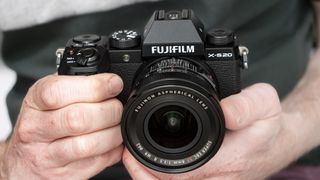
Which type of camera is best for traveling?
Travel cameras come in a range of shapes and sizes. Which style is best for you will depend on how you like to travel, what you like to shoot and how much gear you’re willing to cart around.
Travel zoom compacts such as the Panasonic Lumix ZS200 / TZ200 are pocket friendly, yet offer a broad scope for capturing a range of subjects. Thanks to generous zoom ranges, they give you the opportunity to get close to the action, or to shoot wide. The trade-off for having all of this flexibility in a compact body is generally a smaller sensor, which is less useful for shooting in low light.
If you’d like neat proportions but don’t need the versatility of a zoom lens, premium compact cameras could be worth considering. Models such as the Fujifilm X100V sacrifice zoom range in favour of larger sensors that are better at gathering light – usually a one-inch or, in the case of the X100V, an APS-C chip.
Between compacts and mirrorless cameras is where you’ll find bridge cameras. Bulkier than a standard compact, they offer more comfortable handling and a large zoom range, but without the need to carry different lenses. New bridge cameras are increasingly rare, but the Sony Cyber-shot RX10 IV remains a great example.
If you don’t mind traveling with multiple lenses, many of the best mirrorless cameras have been specifically designed with travel in mind. In the case of models like the OM System OM-5 , that means a portable, weatherproof body, useful image stabilization for shooting on the move, plus a versatile Micro Four Thirds sensor that balances size and performance. And with lots of different lenses to choose from, you can pack different optics depending on the type of trip you’re taking – or opt for a reliable all-round option.
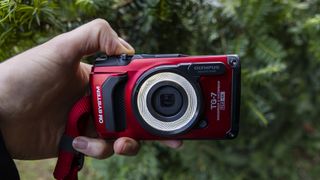
Is a DSLR or mirrorless camera better for travel photography?
When it comes to travel photography, most photographers look for a balance between portability and performance. If this is the combination you’re after, mirrorless cameras will almost aways have the edge over their DSLR rivals. Mirrorless models are generally smaller and lighter than DSLRs, making them easier to wield and travel with.
Despite their more compact proportions, many of the best mirrorless travel cameras can also match or outclass DSLR cameras when it comes to image quality, as well as autofocus abilities and video features. This makes them versatile tools for shooting on the move, especially if you choose a model with in-body image stabilization for sharp handheld results. If you pick a mirrorless camera with an established lens mount system, you’ll also find no shortage of glass to pack for your trip.
That said, there are reasons why you might still want to consider a DSLR camera for travel. Some photographers prefer the chunkier ergonomic grip for which the DSLR format is famous, especially if they plan on shooting for hours on end. The best DSLR cameras also offer superlative battery life, which can be useful if your travel plans include days away from electricity.
Budget might also be a factor, especially if you’re concerned about taking an expensive camera on your travels. Older DSLR cameras can offer great value, as can second-hand mirrorless models. It’s also worth looking at our round-up of the best cheap cameras , which includes some options that are a good fit for travel photography.
- Read our in-depth DSLR vs Mirrorless comparison
How we test travel cameras
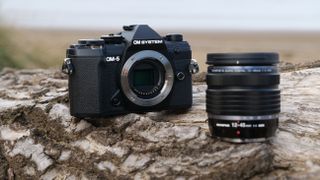
☑️ 100s of cameras reviewed ☑️ 15 years of product testing ☑️ Over 16,000 products reviewed in total ☑️ Nearly 200,000 hours testing tech
Buying a camera these days is a big investment, and travel cameras are no different – so every camera in this guide has been tested extensively by us. For travel cameras in particular, real-world tests are the most revealing way to understand a camera's performance and character, so we focus heavily on those, along with standardized tests for factors like ISO performance.
To start with, we look at the camera's design, handling and controls to get a sense of how suitable it is for life on the road, and any particular features that might be particularly useful for globe-trotters. When we take it out on a shoot, we'll use it both handheld and on a tripod to get a sense of where its strengths lie, and test its startup speed.
When it comes to performance, we use a formatted SD card and shoot in both raw and JPEG (if available). For burst shooting tests, we dial in our regular test settings (1/250 sec, ISO 200, continuous AF) and shoot a series of frames in front of a stopwatch to see if it lives up to its claimed speeds. We'll also look at how quickly the buffers clears and repeat the test for both raw and JPEG files.

In various lighting conditions, we also test the camera's different autofocus modes (including Face and Eye AF) in single point, area and continuous modes. We also shoot a range of photos of different styles (portrait, landscape, low light, macro/close-up) in raw and JPEG to get a sense of metering and its sensor's ability to handle noise and resolve fine detail.
If the camera's raw files are supported by Adobe Camera Raw, we'll also process some test images to see how we can push areas like shadow recovery. And we'll also test its ISO performance across the whole range to get a sense of the levels we'd be happy to push the camera to.
Battery life is tested in a real-world fashion, as we use the camera over the course of the day with the screen set to the default settings. Once the battery has reached zero, we'll then count the number of shots to see how it compares to the camera's CIPA rating. Finally, we test the camera's video skills by shooting some test footage at different frame-rates and resolutions, along with its companion app.
We then take everything we've learned about the camera and factor in its price to get a sense of the value-for-money it offers, before reaching our final verdict.
Get daily insight, inspiration and deals in your inbox
Sign up for breaking news, reviews, opinion, top tech deals, and more.
Tim is the Cameras editor at TechRadar. He has enjoyed more than 15 years in the photo video industry with most of those in the world of tech journalism. During his time as Deputy Technical Editor with Amateur Photographer, as a freelancer and consequently editor at Tech Radar, Tim has developed a deeply technical knowledge and practical experience with cameras, educating others through news, reviews and features. He’s also worked in video production for Studio 44 with clients including Canon, and volunteers his spare time to consult a non-profit, diverse stories team based in Nairobi. Tim is curious, a keen creative, avid footballer and runner, and moderate flat white drinker who has lived in Kenya and believes we have much to enjoy and learn from each other.
- Mark Wilson Senior news editor
- Chris Rowlands
No, Meta – I won’t fake my northern lights photos even though I’m gutted that I missed the real thing
Want the new DJI Air 3? An impromptu import ban has made it harder to buy in the US
OWC Atlas Pro CFExpress Type-A 480GB memory card review
Most Popular
- 2 Data centers could be used as residual power generators as researchers generate 500MWh in a year from a single DC by recycling wasted wind
- 3 NYT Connections today — hints and answers for Sunday, October 20 (game #497)
- 4 NYT Strands today — hints, answers and spangram for Sunday, October 20 (game #231)
- 5 Quordle today – hints and answers for Sunday, October 20 (game #1000)

IMAGES
VIDEO
COMMENTS
Not sure how to capture your upcoming trip? We're here to help you buy the best camera for your travel journey no matter the destination.
The 12 Best Travel Cameras of 2024. Whether you’re shooting landscapes or cityscapes, these are the best travel cameras for capturing your memories.
The best travel camera in 2024: compact and portable cameras to take anywhere. By Gareth Bevan. Contributions from. Basil Kronfli, James Artaius. last updated 14 August 2024. The best travel cameras are small, lightweight, easy to use and offer a range of features – here are the ones to look at.
We've bought over 105 cameras, and below, you'll find the best travel cameras we've tested. If you're specifically looking for a point-and-shoot camera, check out the best compact cameras for travel instead.
The best travel camera overall. Squeezing a host of features into a compact, weatherproof body that’s compatible with a range of lenses, the OM-5 is the ideal travel camera. Read more below
Best pocketable travel camera: Ricoh GR III; The classic choice: Fujifilm X100VI; Truly compact mirrorless: OM System OM-5; All-round compact capability: Sony a6700; The great travel kit: Fujifilm X-S20 with 18-55mm F2.8-4.0 OIS; The stylish travel companion: Nikon Zf; Portable full-frame: Sony a7CR